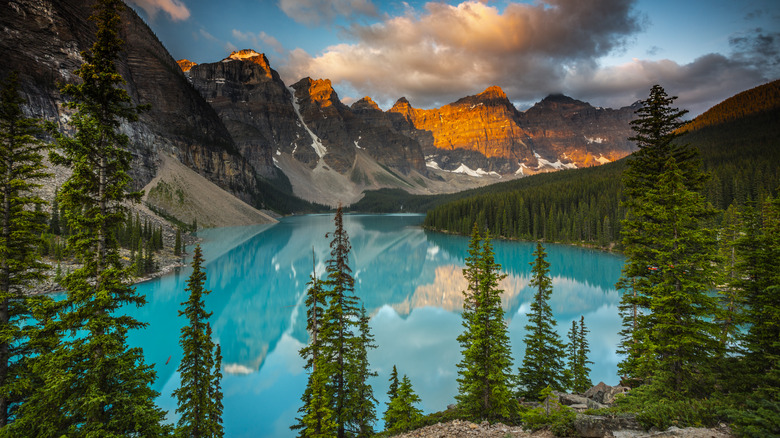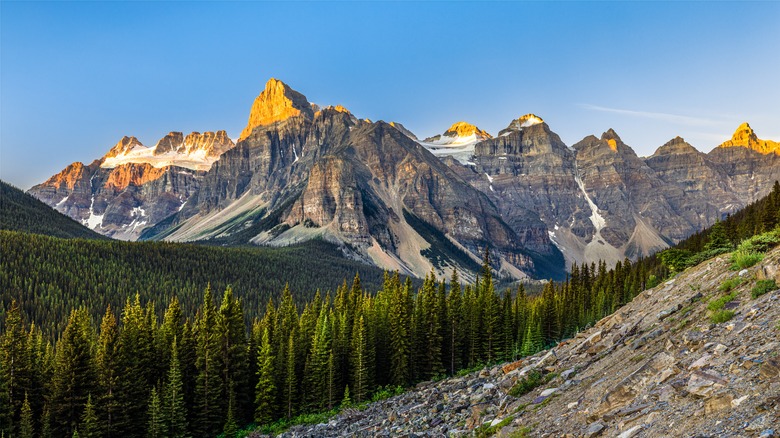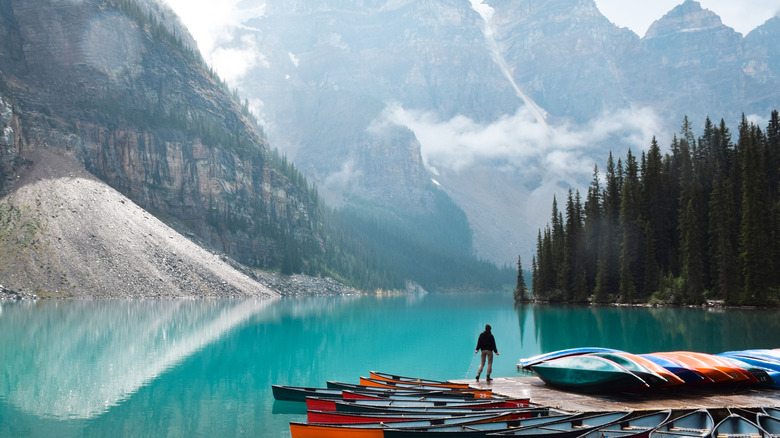Cleaving a continental divide through Canada’s wild westerly region, a string of sharp peaks dwarfs the glacial lakes and sweeping valleys that have formed at their feet. An iconic figure on the Alberta skyline, the Valley of the Ten Peaks runs through the country’s oldest and arguably best-known national park, Banff. Duly famous for its majestic mountains and vibrant blue waters, the natural gifts bestowed on Banff stem from this series of colossal peaks.
The peaks stand sentinel over the aquamarine Moraine Lake, forming the backdrop to a scene so emblematic it was printed on the Canadian $20 bill. They surround a glacial basin that is swathed in boreal forests and conceal crisscrossing hiking trails that cut up the crag, forming a dramatic landscape that is unmissable for travelers traversing the birthplace of Canada’s national parks. Given its place of prominence in Canada’s tourism offering, it’s very easy to reach Banff National Park. There are 33 U.S. airports, scattered all over the country, that offer direct flights to nearby Calgary. From the airport, it’s an hour and a half’s mountain-flanked drive to the national park with regular public transport options also available.
To reach the best viewpoint in the Valley of the Ten Peaks, Moraine Lake, you’ll need to plan ahead. The lake is only open to visitors from the start of June to mid-October, and it’s no longer possible to drive up to the popular tourist spot, so you’ll need to arrange to take a shuttle, bus, or guided tour. The shuttles leave every 30 minutes from 4 a.m. to 6 p.m. and cost around $6 — 60% of the seats only become available online 48 hours in advance, so make sure you’re quick to book in the days ahead or consider taking a tour instead. A park pass is required to travel anywhere within Banff National Park, which you can buy for $8 a day on entry.
Take to the trails in the Valley of the Ten Peaks, in Banff National Park
The first port of call for many travelers to Banff is to strap on hiking boots and set out on the scenic alpine trails that run above the park. There are more than 450 routes that weave through the vast UNESCO-protected preserve, traversing its sweeping canyons, hidden hot springs, dense forests, and glacial lakes. Some of the best of them carry adventurous travelers above the skyline, hiking to expansive viewpoints over the Valley of the Ten Peaks.
Those seeking the most sweeping views over the carved summits of the Rocky Mountain valley should hike the Sentinel Pass, a challenging trail that climbs out to panoramic vistas. Starting out from the northwest shore of Moraine Lake, the route climbs through an emerald forest of larch trees and into the quiet alpine meadows that stretch out across the Larch Valley. It bypasses several other small lakes concealed from the tourist crowds, all also overarched by the imposing massifs. It slopes ever upwards over the Paradise Valley, shifting into a steep scramble at certain points. It’s a challenge, but one that’s worth it for the expansive views it provides over the glorious Valley of the Ten Peaks.
Those seeking a less intense excursion should opt for the Rockpile Trail. Less than half a mile in length, it’s more of a walk than a hike, but it’s perfect for travelers seeking sweeping views of the Valley of the Ten Peaks reflected in the mirrored surface of the calm, turquoise Moraine Lake.




